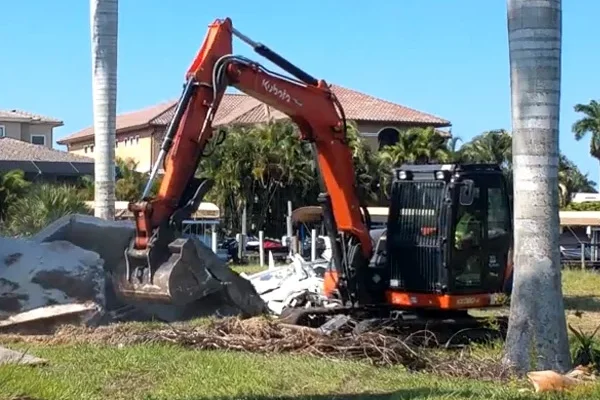Demolition is often the first significant step in a construction or renovation project. While it may appear straightforward, it requires careful planning, precise execution, and strict safety procedures to ensure success. Whether removing an old structure, clearing land, or preparing a site for new development, demolition lays the foundation for the rest of the project. It involves structural assessments, utility management, debris removal, and regulatory compliance, making it far more complex than simply tearing things down. Professional demolition services understand how to minimize risk, protect surrounding areas, and maintain project timelines, all while adhering to industry standards. When handled correctly, demolition not only ensures the safety of workers and nearby properties but also improves efficiency by preventing costly setbacks and delays. Understanding how professional demolition services operate provides valuable insight into why this stage is critical to the overall success of any construction project.
Planning and Site Evaluation
Effective demolition begins long before any machinery is brought on-site—successful projects rely on thorough planning and detailed site evaluations. Professionals conduct inspections to identify structural weaknesses, hazardous materials, utility lines, and potential safety concerns. This information helps create a customized demolition plan tailored to the building’s condition and the project’s goals. Careful planning ensures that load-bearing walls are removed in the proper order to avoid uncontrolled collapses and that adjacent properties or structures are protected from damage. Permits and regulatory requirements must also be addressed during this stage, as demolition is often subject to strict local and environmental laws. Proper coordination with utility companies allows for the safe disconnection of electricity, gas, water, and sewer lines to prevent accidents. This preparation also includes determining the required equipment type and the safest areas for machinery placement. A well-drafted demolition plan streamlines the entire project, minimizes risk, and ensures efficient execution. Without this critical planning phase, unexpected complications could stall progress, increase costs, and threaten worker safety. That is why a detailed site evaluation is one of the most essential steps in any demolition process.
Controlled Techniques for Safe Execution
Once planning is complete, demolition teams focus on executing the project through controlled techniques designed to maintain safety and precision. Depending on the structure, professionals may use mechanical equipment, selective dismantling, or even implosion methods. Controlled demolition ensures that materials fall in predetermined directions, reducing the risk of damage to nearby buildings, roads, or utilities. This level of precision is essential, especially in residential or urban environments where space is limited. Crews follow safety protocols to protect workers from falling debris, unstable structures, and hazardous materials. Dust suppression methods such as water sprays are used to maintain air quality and protect the surrounding community. It is during this stage that communication and coordination are vital, with team members working together to maintain stability and respond quickly to any changes. A smooth demolition process keeps the overall project on schedule and eliminates unnecessary obstacles. Many homeowners have residential demolition by Bruce Johnson Construction on every project. With the proper techniques and equipment, demolition becomes a highly organized process that clears the way for construction without compromising safety or efficiency.
Protecting Surrounding Structures and the Environment
Demolition activities can have significant effects on nearby structures and the environment if not managed carefully. Professionals take extra precautions to protect neighboring buildings, landscapes, and infrastructure. Temporary barriers, fencing, and protective coverings are installed to prevent flying debris or vibrations from causing damage. In selective demolition, only specific areas of a structure are removed, leaving other sections intact, requiring precise artistry and careful control. Environmental protection is another primary consideration. Demolition can release dust, chemicals, and hazardous materials, such as asbestos or lead paint, if not handled properly. Teams conduct testing and abatement procedures to safely remove and dispose of hazardous substances in accordance with environmental regulations. Recycling and material recovery also play an essential role in modern demolition, as metals, concrete, wood, and other materials can often be repurposed, reducing landfill waste and lowering disposal costs. Professionals ensure that all debris is sorted and transported to approved facilities, maintaining compliance with environmental standards. By protecting both the surrounding area and the environment, demolition teams support sustainable construction practices and contribute to safer project outcomes.
Efficient Project Management and Timely Completion
Time is a critical factor in construction projects, and any delay during demolition can affect the entire schedule. Professional demolition services focus on efficiency through proper coordination, clear communication, and adherence to schedules. Having the right equipment and workforce available allows them to complete tasks quickly without sacrificing safety or quality. Project managers oversee each phase to ensure everything progresses according to plan and adjust as needed to address unexpected challenges. Because demolition involves multiple steps—planning, removal, disposal, and cleanup—streamlined management helps maintain momentum. By using modern machinery and technology, professionals can perform tasks faster and with greater accuracy, reducing downtime and eliminating rework. Efficient demolition also prepares the site for the next phase of construction by removing debris, grading the land, and confirming site readiness. This allows builders to move in immediately and begin work without delay. Clear documentation and compliance with regulations prevent legal or permitting issues that could stall progress. Ultimately, efficient demolition services save time, reduce overall project costs, and support smoother transitions between project stages.
Read More: https://acubi.us/fashion-outlets-of-chicago/
A Safe Start Leads to Successful Results
Demolition may seem like a destructive process, but when handled professionally and precisely, it becomes the crucial first step toward building something new. Safety and efficiency are at the heart of every successful demolition project, and achieving both requires planning, skilled execution, environmental responsibility, and strong project management. Thorough inspections and site evaluations help identify potential risks, while controlled demolition techniques ensure that structures are removed safely and accurately. Protecting nearby properties and the environment demonstrates responsibility and care, and efficient planning keeps projects on schedule and within budget. Professional demolition services provide the structure and organization needed to avoid unnecessary damage, delays, or hazards. When demolition is done right, it sets the tone for a smooth construction process, laying a strong foundation for everything that follows. By prioritizing safety, precision, and efficiency, demolition services help ensure projects get off to the right start and pave the way for successful, long-lasting results.



